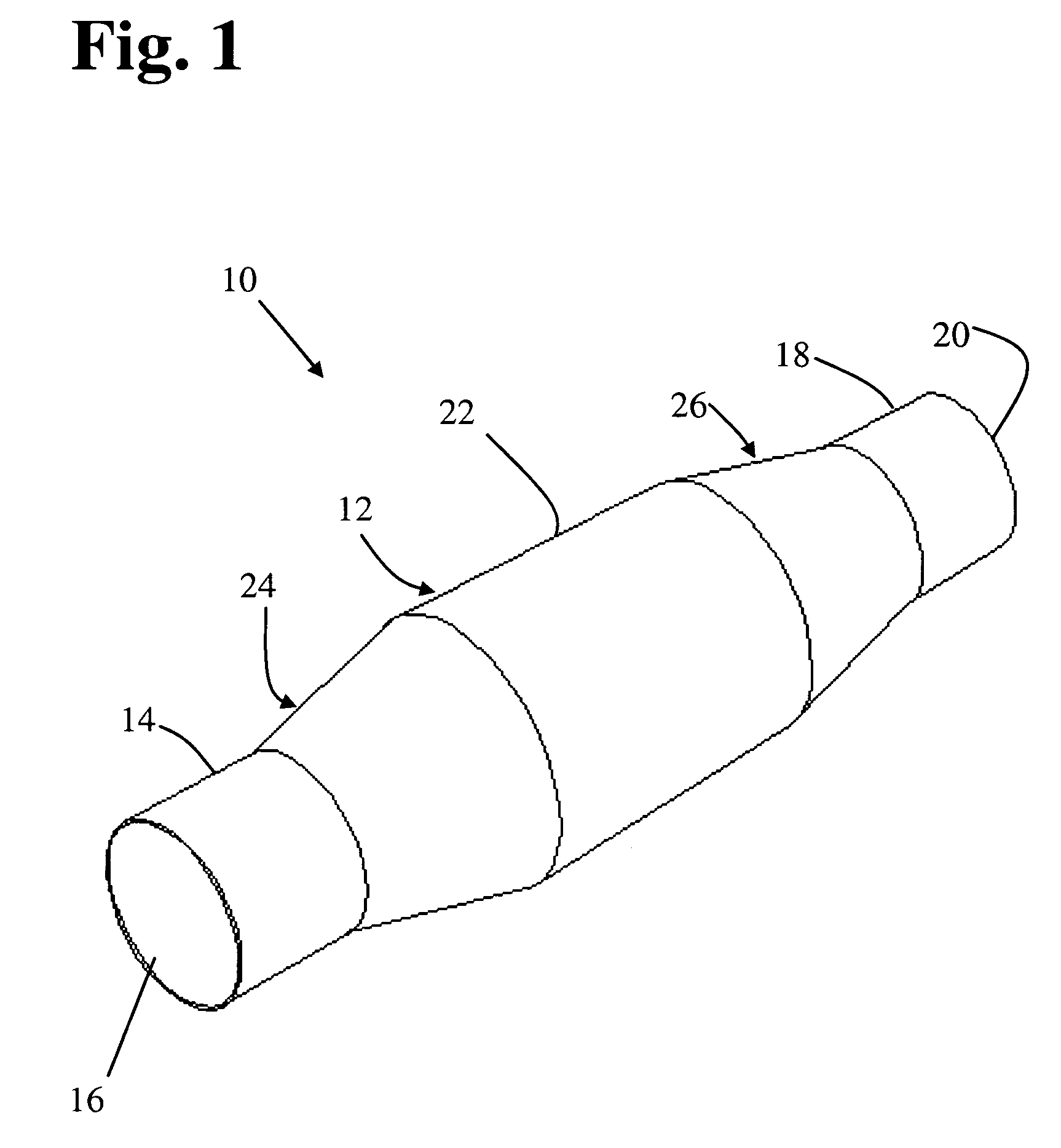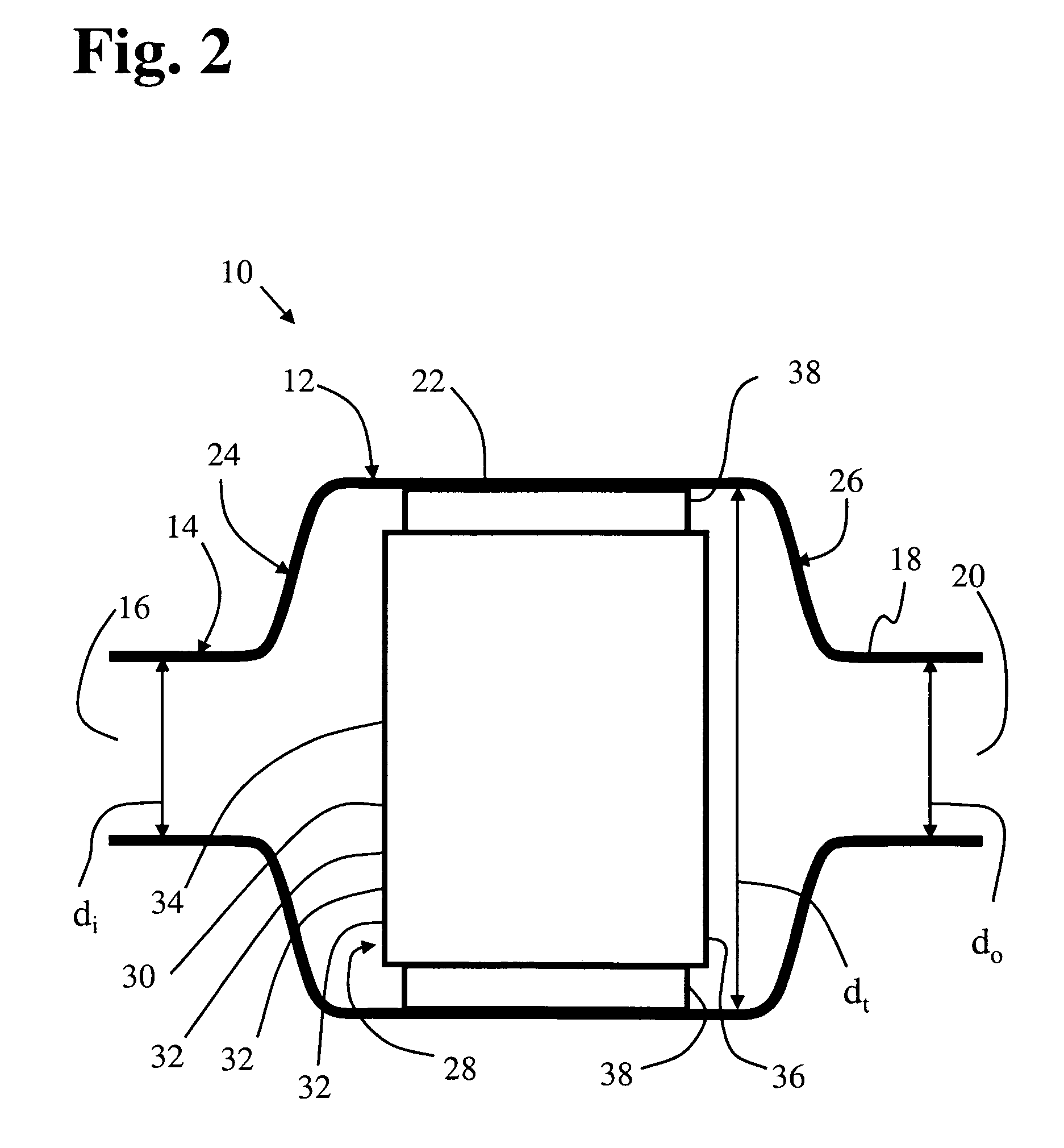Automotive exhaust component and process of manufacture
a technology of exhaust components and manufacturing processes, applied in the direction of machines/engines, other domestic objects, separation processes, etc., can solve the problems of notoriously vulnerable loci of corrosive attack on the welding surface, and achieve the effect of reducing the diameter, greatly reducing the required press force at each stage, and being highly adaptabl
- Summary
- Abstract
- Description
- Claims
- Application Information
AI Technical Summary
Benefits of technology
Problems solved by technology
Method used
Image
Examples
example 1
Preparation and Testing of a Catalytic Converter
[0091]A catalytic converter of a type commonly used for emissions reduction from an automobile engine was formed using a catalytic element comprising a conventional platinum-group noble metal type of catalyst supported on the walls of multiple passages extending through a cordierite ceramic honeycomb structure. The honeycomb structure was about 3.6 inches in diameter and 3 inches long. The housing for the converter was formed from a seamless tube of 409 stainless steel alloy having an outside diameter of about four inches and 0.049-inch walls. The honeycomb structure was wrapped with an intumescent mat compressed to about 0.12 inches thickness, and the combined mat and ceramic were then inserted into the center part of the generally tubular converter housing. The ends of the housing were then end-formed to provide an inlet port section and an outlet port section, each of which having a diameter of two inches and a length of two inches....
PUM
| Property | Measurement | Unit |
|---|---|---|
| diameters | aaaaa | aaaaa |
| diameters | aaaaa | aaaaa |
| total length | aaaaa | aaaaa |
Abstract
Description
Claims
Application Information
 Login to View More
Login to View More - R&D
- Intellectual Property
- Life Sciences
- Materials
- Tech Scout
- Unparalleled Data Quality
- Higher Quality Content
- 60% Fewer Hallucinations
Browse by: Latest US Patents, China's latest patents, Technical Efficacy Thesaurus, Application Domain, Technology Topic, Popular Technical Reports.
© 2025 PatSnap. All rights reserved.Legal|Privacy policy|Modern Slavery Act Transparency Statement|Sitemap|About US| Contact US: help@patsnap.com



